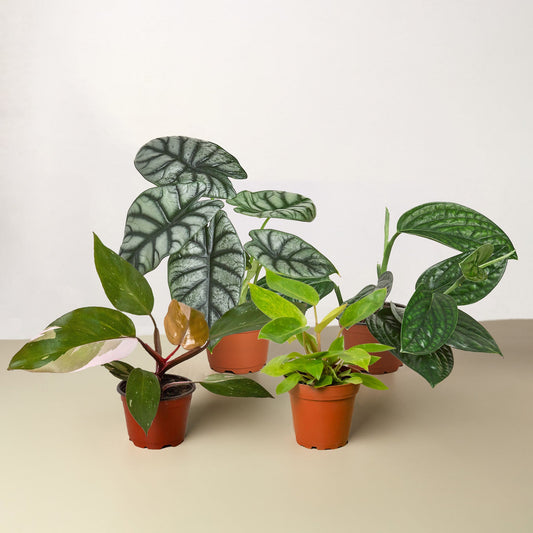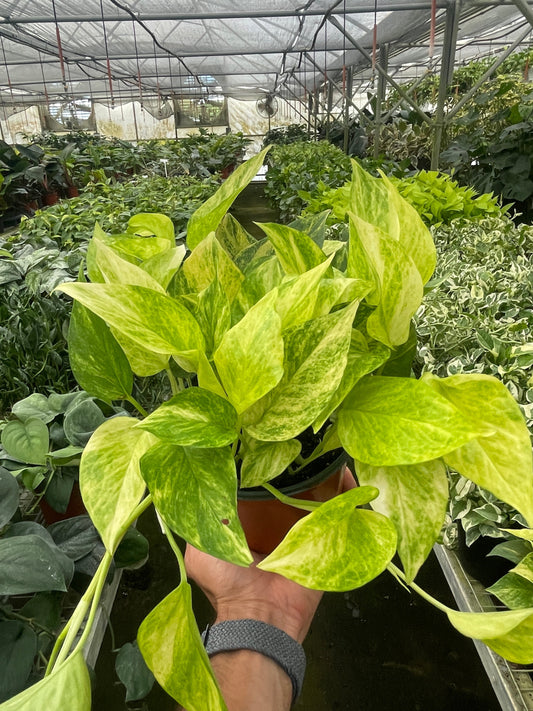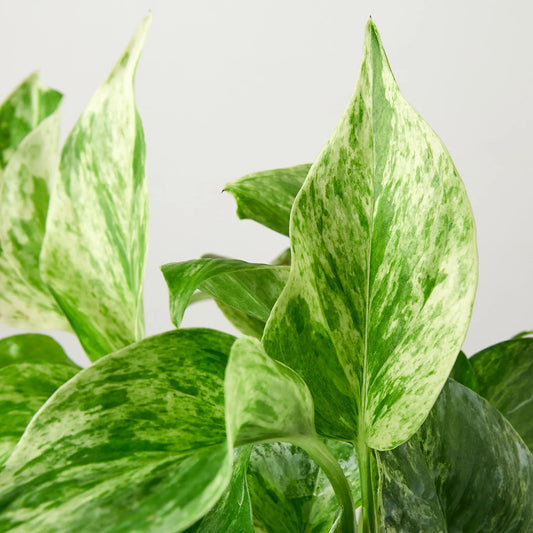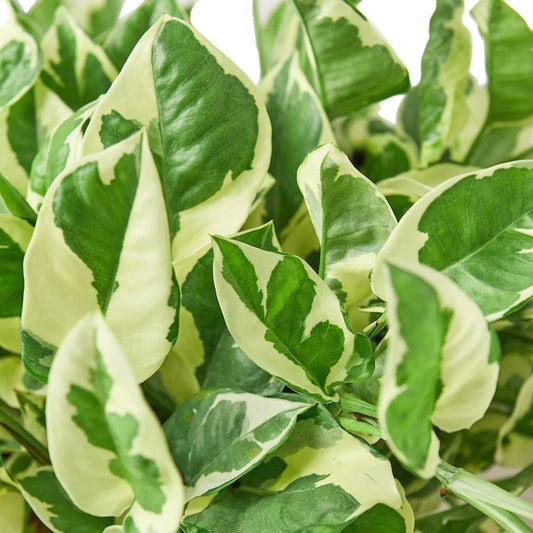Homalomena Selby Aerial Roots: Everything You Need to Know
Cafe Planta Team
Homalomena Selby is a plant that often sparks curiosity with its lush foliage and unique growth habits. One feature that tends to attract particular interest is its aerial roots. These structures, while common in the plant world, can leave many plant parents scratching their heads. What are they for? Should you be doing something special for them?
In this article, we'll unravel the mysteries of Homalomena Selby's aerial roots. We'll discuss what they are, why they form, and how you can care for them. Whether you're a seasoned plant lover or just starting your journey, there's something here for you.
Understanding Aerial Roots
Before diving into the specifics of Homalomena Selby, let's chat about aerial roots in general. These roots grow above ground, unlike their underground counterparts. They're quite common in many plant species, from the majestic Monstera to the humble orchid. But why do they exist?
Aerial roots have several roles, depending on the plant. Some help with stability, anchoring the plant as it climbs or spreads. Others play a part in nutrient and moisture absorption, especially for plants in environments where these resources are limited. In some cases, they can even help with gas exchange, functioning a bit like additional lungs for the plant.
For the Homalomena Selby, aerial roots help stabilize the plant and can absorb moisture and nutrients from the air. If you notice these roots developing, it's a sign your plant is healthy and growing well, so there's no need to panic.
The Role of Aerial Roots in Homalomena Selby
Understanding the specific role of aerial roots in Homalomena Selby can help you appreciate their fascinating nature. For this plant, aerial roots primarily serve as support structures. In their natural habitat, these roots would help the plant anchor itself to nearby trees or rocks, ensuring it remains upright even in challenging conditions.
In addition to support, these roots can absorb moisture and nutrients from the surrounding environment. This is particularly helpful in humid climates where moisture can be plentiful in the air. However, if you're growing your Homalomena Selby indoors, you might need to mimic these conditions to keep those aerial roots happy.
Think of the aerial roots as little helpers for your plant. They might not look like much, but they're quietly working to ensure your Homalomena Selby thrives. By understanding their purpose, you can better cater to your plant's needs.
How to Care for Aerial Roots
So, you've noticed aerial roots sprouting from your Homalomena Selby. What next? Caring for these roots is relatively straightforward, but there are a few things to keep in mind.
First, avoid cutting them off unless they're damaged or diseased. Aerial roots are a natural part of the plant's growth, and removing them can stress your Homalomena unnecessarily.
Here are some care tips:
- Humidity: Try to maintain a humid environment. This can be achieved by misting the plant or using a humidifier.
- Moisture: Ensure the aerial roots have access to moisture. You can mist them directly, especially if your home is on the dry side.
- Support: If the roots are growing extensively, consider providing a support structure, such as a moss pole, for them to cling to.
By following these simple steps, you can ensure your Homalomena Selby's aerial roots remain healthy and functional, contributing to the overall well-being of your plant.
Dealing with Unruly Aerial Roots
Sometimes, aerial roots can seem a bit unruly. They might extend far from the plant or even start to grow into other nearby pots. While this is generally harmless, it can be unsightly or inconvenient, especially if you're trying to maintain a tidy plant display.
If you find the aerial roots are becoming a nuisance, consider gently redirecting them. You can guide them towards a support structure or even back into the potting mix if they're long enough. However, be careful not to damage them in the process.
Another strategy is to trim the roots slightly. While it's generally best to leave them alone, a light trim can help keep things in check. Just be sure to use clean, sharp scissors to avoid introducing any potential infections.
Remember, aerial roots are there for a reason, so try not to get too carried away with trimming. A little guidance goes a long way in keeping your plant happy and your space organized.
Common Issues with Aerial Roots
Like any part of a plant, aerial roots can encounter problems. The most common issues include dryness, rot, and pest infestations. Recognizing these early can help you address them before they affect the entire plant.
Dryness: If the roots appear shriveled or dry, it might be due to low humidity. Increasing the humidity or misting more frequently can help.
Rot: Overwatering or high humidity can sometimes lead to rot. Make sure your plant has good airflow and avoid over-misting.
Pests: Aerial roots can sometimes attract pests like spider mites. Regularly inspect your plant and treat any infestations promptly with insecticidal soap or neem oil.
By staying vigilant, you can catch these issues early and keep your Homalomena Selby in top shape.
Incorporating Homalomena Selby into Your Home
Aerial roots aside, Homalomena Selby is a stunning addition to any home. Its lush leaves and vibrant color can instantly brighten up a room. But how do you incorporate it into your decor?
Consider using the plant as a focal point in a room with neutral tones. Its striking green leaves can add a pop of color without overwhelming the space. Alternatively, place it among other houseplants to create a mini indoor jungle.
When styling your Homalomena Selby, don't forget about the aerial roots. Embrace them as part of the plant's natural beauty. You might even find that they add an interesting texture to your plant displays.
Remember, incorporating plants into your home is all about creativity and personal style. Whether you prefer a minimalist look or something more eclectic, Homalomena Selby can be a versatile and beautiful choice.
Choosing the Right Pot and Soil
Potting your Homalomena Selby correctly is crucial for its health. A well-chosen pot and the right soil can make all the difference in ensuring your plant's roots, both aerial and subterranean, thrive.
When selecting a pot, consider one with drainage holes. Proper drainage prevents water from pooling at the bottom, which can lead to root rot—a common issue for many indoor plants. A pot with a saucer can also help catch excess water and prevent messes.
As for soil, a well-draining mix is essential. You can use a standard potting mix and add some perlite or orchid bark to improve drainage. This helps keep the soil from becoming waterlogged while still retaining enough moisture for the plant's needs.
A little attention to pot and soil choice can go a long way in keeping your Homalomena Selby happy and healthy. Plus, with the right setup, you'll be able to enjoy its beauty for years to come.
Propagating Homalomena Selby
If you love your Homalomena Selby and want more of this delightful plant, you might consider propagation. While aerial roots don't play a direct role in this process, understanding their function can still be helpful.
Homalomena Selby is typically propagated through division. When your plant becomes large enough, you can carefully separate it into smaller sections, each with its own set of roots. Make sure to use a clean knife or scissors to cut through the root ball.
Once divided, repot each section into its own pot with fresh soil. Water them well and place them in a warm, bright spot to help them adjust to their new environment.
Propagation is a fun way to expand your plant collection or share your love of Homalomena Selby with friends and family. Plus, it gives you a chance to understand even more about your plant's growth habits, including those intriguing aerial roots.
Final Thoughts
We've covered quite a bit about Homalomena Selby and its aerial roots, from understanding their role to incorporating this beautiful plant into your home. Whether you're dealing with aerial roots for the first time or just looking to improve your plant care skills, I hope you found this information helpful.
At Cafe Planta, we love sharing our passion for plants. If you have any questions or need advice, feel free to email us or drop us a message on Instagram. We're here to help you create a thriving plant collection, whether you're a seasoned plant parent or just starting out. Happy planting!



















